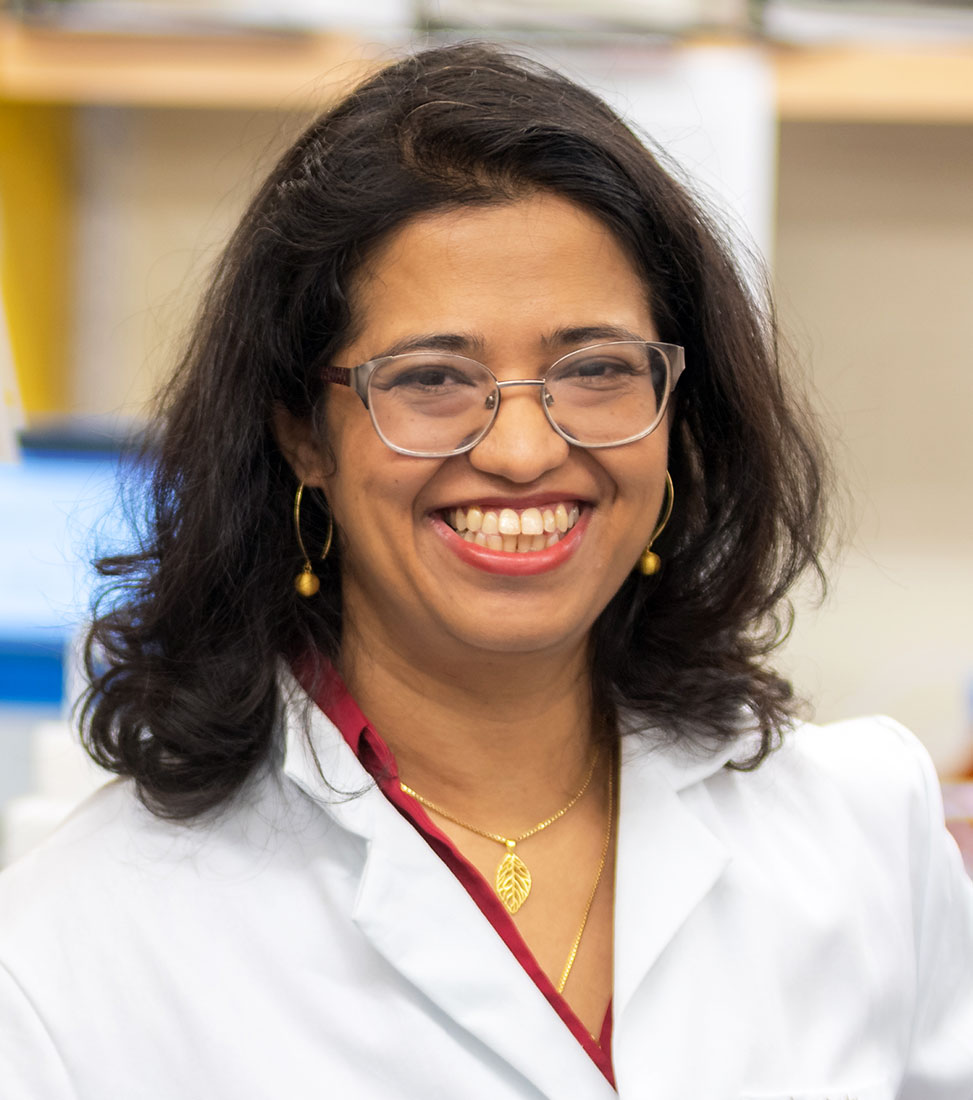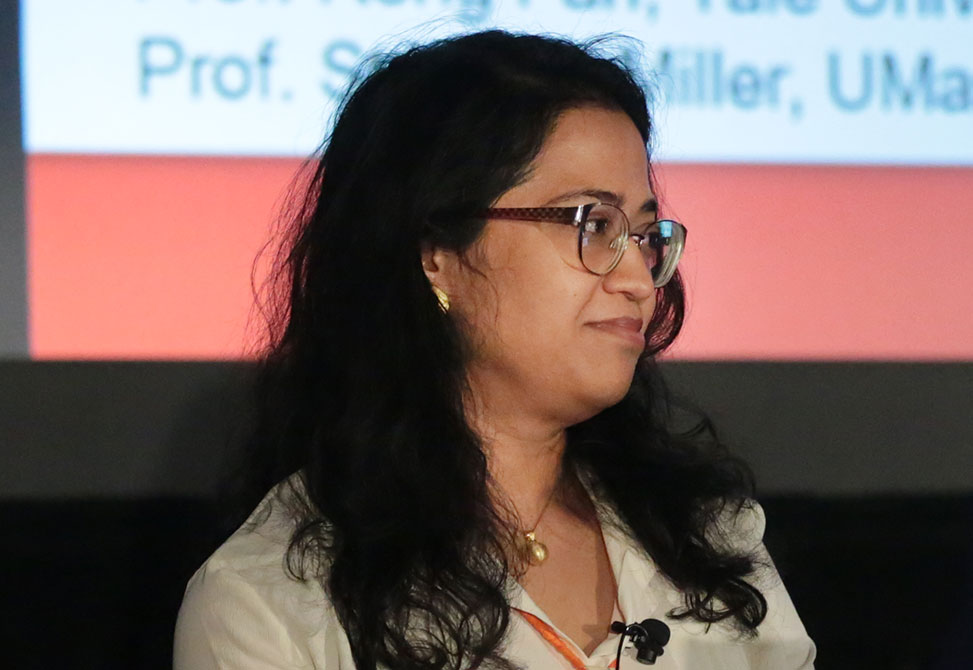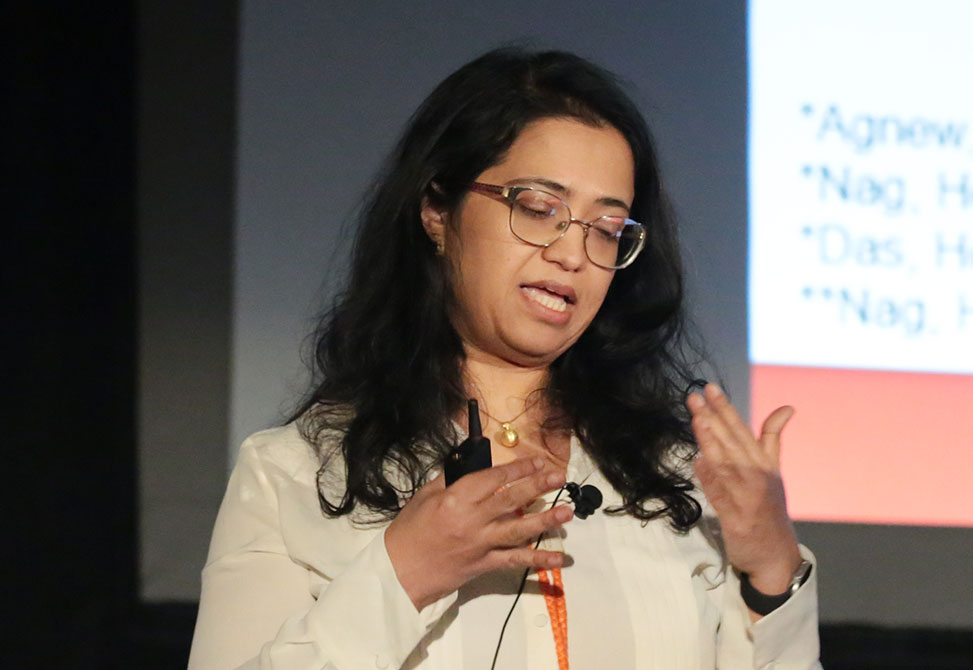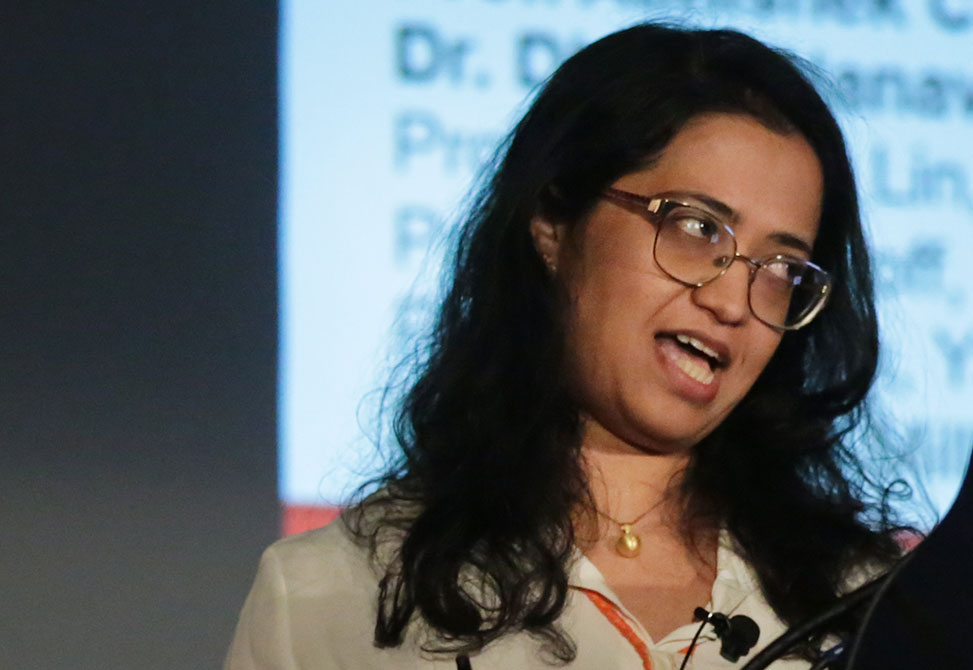Arundhati Nag
Carlson School of Chemistry and Biochemistry, Clark University
Talk Title
Use of Proximity-Catalyzed IEDDA Reaction for Cyclic Library Screening to Target Point-Mutant Protein
Presentation Time
SESSION 8: NATURAL PRODUCT BIOSYNTHESIS & INSPIRATION FROM NATURE
Tuesday, June 27, 2023, at 12:30 pm - 12:50 pm
Antibodies, due to their high affinity and selectivity for epitopes on antigens have extensive use as therapeutics reagents, but their large sizes preclude them from being effective therapeutic agents inside cells. There is a gap in the technologies yielding smaller antibody alternatives of smaller size that target a specific protein region like antibodies. In fact, there is a distinct lack of technology to distinguish mutant protein-protein interactions, PPI, from wildtype PPI and selectively inhibit the mutant PPI. Our objective is to develop a technology that allows the creation of antibody alternatives targeted to a specific region of interest, ROI, irrespective of the structure and whether the region is a hot spot.
We are extending a previously developed strategy, Chemical Epitope Targeting, CET, that worked for targeting unstructured ROI with macrocyclic peptides for targeting highly structured ROI. We hypothesize that one can bias the protein screening process by adding biorthogonal reactive partners to the protein of interest, POI, at the ROI and to the library being screened so that the covalent interaction between the reactive partners reinforces the non-covalent interactions between a POI and its potential binder. We are adding a biorthogonal reaction handle like an alkene or alkyne close to the ROI on the full-length protein through unnatural amino acid incorporation.
We plan to screen the modified protein against an OBOC cyclic peptide library containing the second bio-orthogonal functionality, 1,2,4,5-tetrazine. The tetrazine on the peptide library acts both as the cyclization linker and as a biorthogonal reactive partner for the protein. As a proof-of-concept of the IEDDA proximity-catalyzed screening technology, we shall develop an inhibitor that inhibits the interaction of KRAS(G12V) protein, an oncogenic point-mutant protein, with its activating G-factor, SOS.
Professor Nag's lab develops unique peptide or peptidomimetic macrocycles using robust chemical reactions and Solid Phase Peptide Synthesis. Macrocycles, with molecular weights of approximately 1000, bridge the gap between small molecules and proteins, in terms of size and composition. Chemical synthesis of macrocycles allows one to incorporate unique properties such as thermal and protease stability and inclusion of small molecules. Harnessing the power of molecular recognition in macrocycles, we currently are working on different aspects of biological chemistry and catalysis.
Currently her group is focused on the following themes.
Macrocyclic Peptides
Macrocyclic peptides as potential Cancer Therapeutics Intracellular regulatory proteins involved in cell signaling frequently interact with each other through large surface areas, a phenomenon termed as Protein Protein Interactions, PPI, and aberrant PPI can lead to diseases like cancer. Peptide macrocycles, with their extended structures, can occupy efficiently the large protein surfaces involved in PPI, and therefore can inhibit prevent aberrant intracellular PPI. The Nag lab is developing a technology to synthesize and screen novel peptide macrocycles which can penetrate the cell membranes and selective target the protein interaction surfaces.
Designing Biomimetic Catalytic Centers
Complexes of transition metals like copper and nickel with peptide and peptidomimetic macrocycles can be visualized as miniature versions of photosynthetic proteins such as Photosystem I and Photosystem II. While the proteins are excellent catalysts, they degrade rapidly outside the cellular environment. The Nag Lab is trying to optimize the motifs of known linear peptides, as complexes with metals, for efficiency as water oxidation catalysts. Future work will involve development of unique macrocycle –metal or organic ligand - metal catalytic centers as catalysts for homogeneous and heterogeneous water oxidation and carbon dioxide reactions.
Developing Biological Small Molecule Sensors
Building on our previous research on selective recognition of phospho-serine and phosphorylated proteins, we plan to develop macrocyclic reagents for recognition of phosphate containing biological small molecules. Selective recognition will involve not only the phosphate moiety sensing but also unique sensing of other parts of the small molecule. Unique elements in the macrocycles will enable phosphate recognition while amino acid components of the macrocycle will allow selective recognition of the small molecule.






